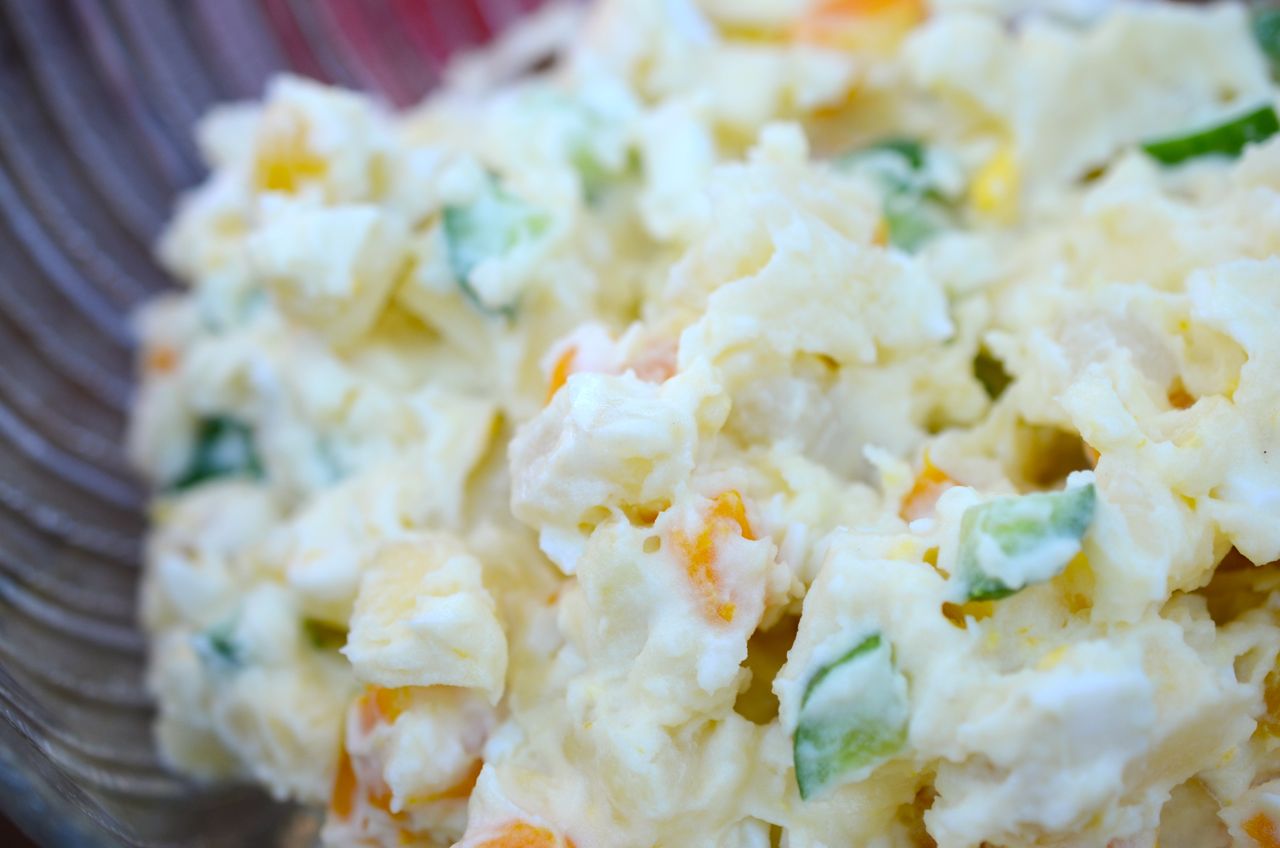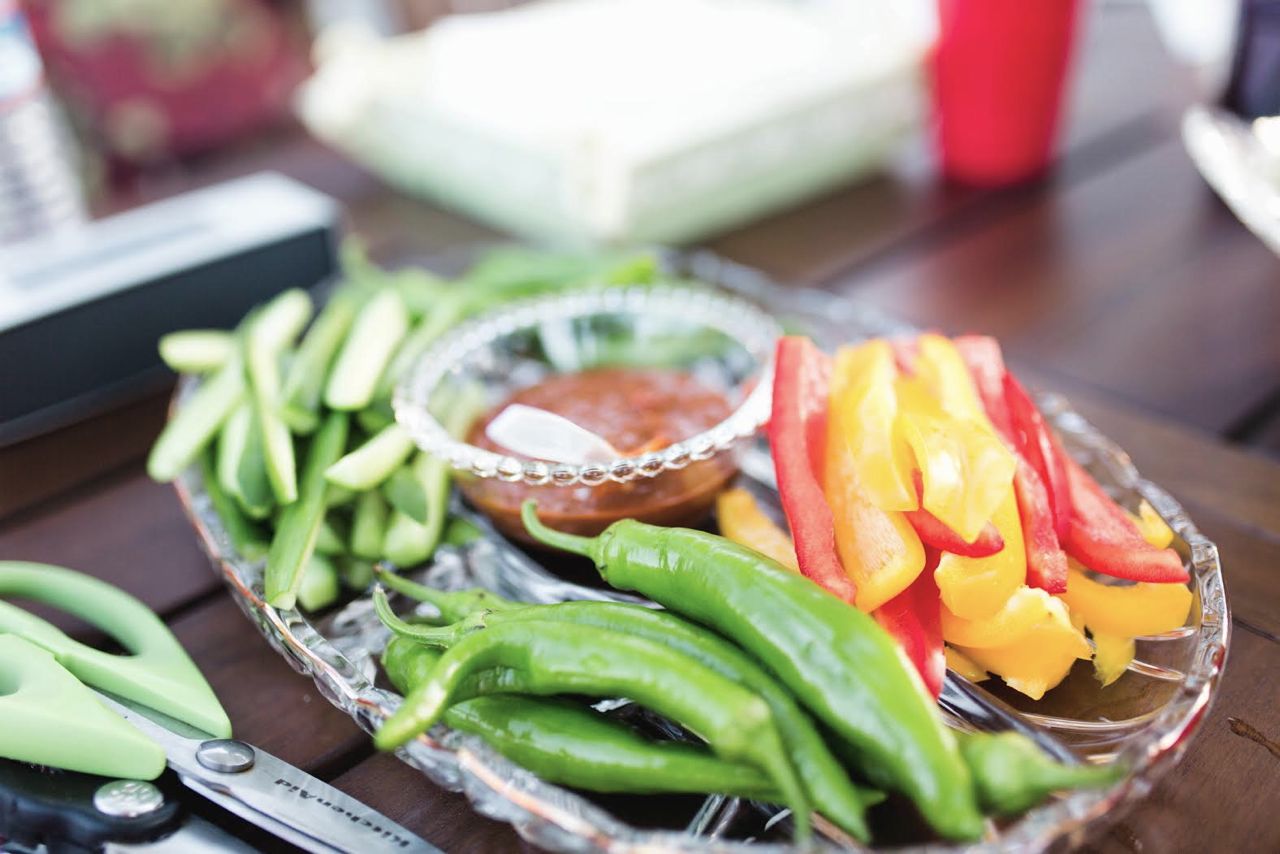Recently, I hosted a Korean dinner party for our American friends at home- some of whom have never tasted Korean food before. So it was a bit of a challenge to come up with a menu that could show the authentic taste of Korean food but at the same time would not be too much of a shock to their taste buds. Since the party was on a Friday, I did not have my husband to help me during the day. So not only did I have to prepare the house (clean, decorate, set the table, etc), I also had to do most of the dinner preparations all by myself.. Hmm… so I knew I could do some of the work in advance during the week, but I still wanted to make sure the menu was something I can handle. So-what is universally yummy but also not too time consuming to prepare?? That was the question..
But first a little bit about appetizers. Since I knew I was going to be busy cooking dinner (and let’s face it, appetizers are really not native Korean food), I asked my friends to bring some appetizers to share. In keeping with the Korean/Asian food theme, a friend made this amazingly yummy Rice Stuffed Squid. In Korean it’s called 오징어순대 (Oh-jing-uh Soondae) which means squid sausage. It was really touching that he took the time to search for the recipe and make it himself. It was really awesome.
Besides the squid dish, there were egg rolls and really great home made lettuce wraps with pork stuffing that were also amazing. Thank you, Friends!
So here is my Korean dinner party menu that is quite authentic but easy and simple to prepare. Having had the party, I can now say with confidence that this is indeed a good menu for guests who are not very adventurous eaters (as some of my friends certainly are not). Some friends enjoyed it so much that they asked me where they could get the ingredients and how they could recreate this dinner on their own. That was definitely the best compliment anyone can receive.
Korean Party Menu for 12 people
- Korean BBQ Beef Ribs (갈비구이 Kalbi Gui)-
I bought and marinated approx 6 lbs of beef ribs cut “LA Style” (thinly sliced across the bone) using my Bulgogi marinade recipe. After marinating them overnight in the refrigerator, my husband grilled them outside on wood charcoals (100% wood charcoals is best) until each side was browned. Kalbi is quite tender but has lots of fat so grill the Kalbi after the guests arrive and keep the Kalbi warm until it is time to serve.
I love how this kind of cut rib produces really tender pieces but one thing I dislike is how sometimes the bone chips of the ribs end up on the meat making the texture feel gritty. Even though I wash each piece individually in water first, it is almost impossible to avoid the bone chips. So for my non-Korean guests, I decided to take the meat off the bone. This way, there is no bone to cut around and also eliminates any possibility of having bone chips in the marinade.
- Zucchini Fritters (호박전 Hobahk Jeon) – sliced two good size Korean Zucchinies for the Hobahk Jeon. Make it in advance and keep it warm in the warming drawer (moist) or cover it in tin foil and keep it warm in the oven at 200 F or so.
- Fried Vegetable Dumplings (야채 군만두 Yache Mandoo) – pan fried one whole bag of frozen Pulmuone Vegetable Dumplings in some vegetable oil. Kept these warm in the oven with the hobahk jeon.
- Germinated White Rice – optionally make brown rice or fried rice instead of plain white rice. But plain rice is easier to prepare than fried rice and is also better for your diet.
- Salad with miso dressing- used a ready made miso dressing on some greens and some sweet corn (yes, I know..this is Japanese but it was just in case some guests didn’t like the Ssam). The Red Shell brand Japanese Miso Dressing is my all-time favorite Asian dressing (goes well with any Asian food) but I always feel it is a bit too thick and heavy. So I usually lighten it up by adding some fresh squeezed lemon juice – approx 1 T of lemon juice to 1/4 C of dressing. Try it, it really makes a huge difference.
- Ssam (Lettuce Wraps) – served assorted lettuce greens, perilla leaves and ssukat from my garden. Everyone loved that they were home grown.
- Ssam Jang (Spicy Soy Bean Sauce for Lettuce Wraps)- check my previous posting for Ssam Jang recipe. You can also buy Pulmuone brand Ssamjang in case you don’t want to make it yourself.
- Kimchi – sliced and served whole cabbage Kimchi which is the most traditional type of Kimchi . My ultimate favorite brand of Kimchi is Jongkajip(종가집). It is actually imported directly from Korea. It’s expensive but I wanted to offer the best tasting Kimchi I could find. (For making Kimchi Jjigae, Kimchi fried rice or any recipe that requires larger amount of Kimchi, I usually buy a jar of Kimchi made locally because the local brands are cheaper and because after Kimchi is cooked most brands and types taste pretty good).
**If I had extra time, I would have loved to add a seafood dish to my Korean party menu- either Shrimp or Fish fillet Jeon, or grilled salmon of some kind.
**Other dishes that go well with Kalbi are moo saeng che (radish salad), potato salad (both Korean style and American style work well) and jangahjii (korean pickles). Basically foods that are sweet and sour or creamy.
Serving the food
Table Plating- As you see in the picture below, I decided to plate the Ssam, Hobahk Jeon, Mandoo (dumplings) and sauces already on the table – Korean style. For a table of 12 people, I prepared 3 sets of banchan with their condiments, so that each guest could reach them easily during the meal. Normally, I would have also placed Kimchi alongside each set here but because I thought some of my friends may find the smell a little offensive, I thought I would just pass the Kimchi around instead. For utensils, I gave everyone steak knives so they could easily cut the meat.
Individual serving- For individual plates, I served the rice and Kalbi and let the guests actually serve the rest of the banchan (side dish) themselves from the table. The picture below is a sample of how a plate would look when all the food was served.
Doesn’t it look fabulous?! My friends really seemed to enjoy the food – especially the Kalbi of course. (About this picture – There was this one piece of Kalbi that escaped me and had the bones still in them.. I purposefully included it here so you could also see how it looks with the bone in.)
Centerpiece- Instead of buying flowers, I cut some lavender and lantana blooms from my garden. They looked beautiful but the arrangement was too tall.. next time I am going to try to make a proper centerpiece that is lower in height.
Well, I would say the dinner party was a total success!!
Oh! I forgot to mention the dessert.. I originally wanted to make some traditional Korean dessert like Yakwa ( I could have made this a day before) but didn’t get to… kind of disappointing.. But a friend brought cheese cake. So we had them with some berries!











































































































































































